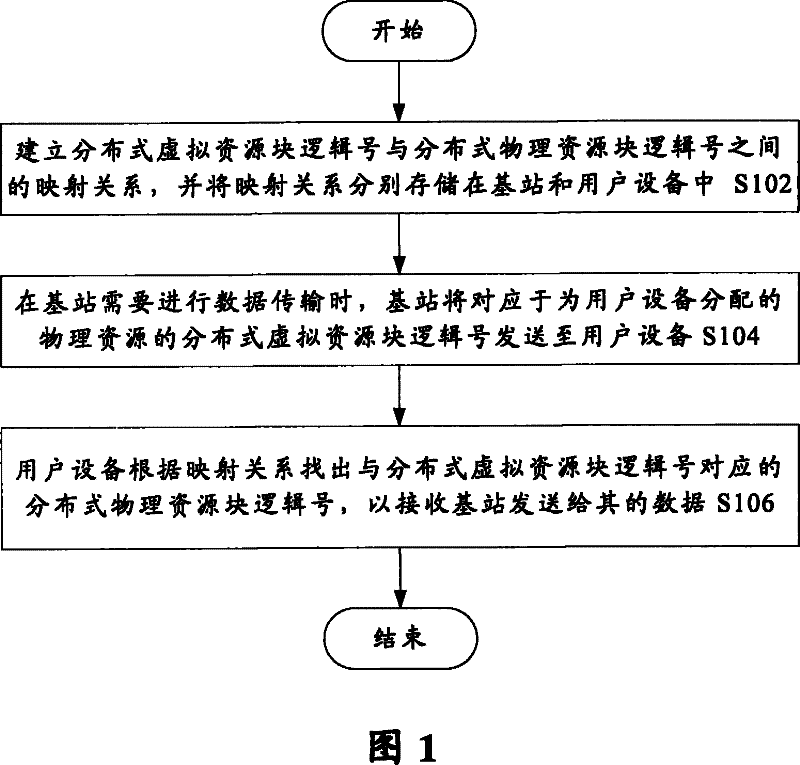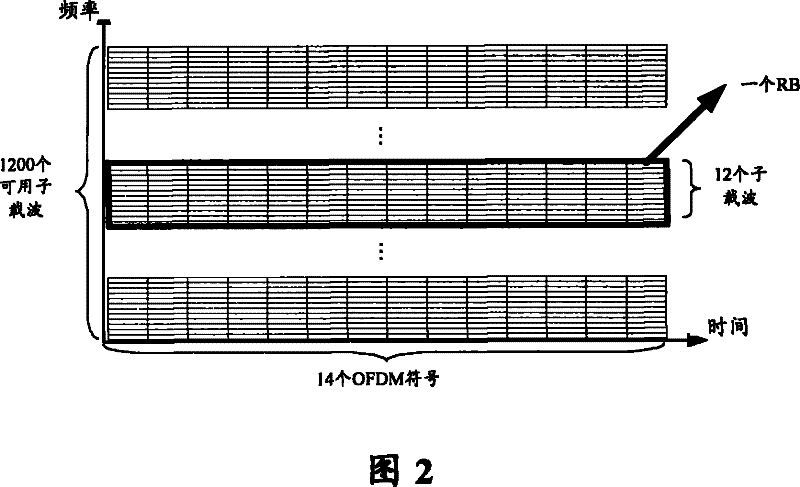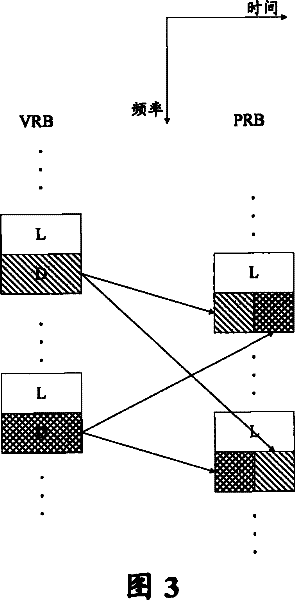Data transmission method for orthogonal frequency division multiplexing system
A data transmission method and orthogonal frequency division technology, applied in the data transmission field of an orthogonal frequency division multiplexing system, can solve problems such as large signaling overhead, poor filling efficiency, and changes, and achieve low signaling overhead and complex signaling. Low intensity and the effect of reducing the interference of adjacent cells
- Summary
- Abstract
- Description
- Claims
- Application Information
AI Technical Summary
Problems solved by technology
Method used
Image
Examples
Embodiment Construction
[0016] The specific implementation manners of the present invention will be described in detail below with reference to the accompanying drawings.
[0017] refer to figure 1 , illustrating a data transmission method for an OFDM system according to an embodiment of the present invention. Such as figure 1 As shown, the data transmission method includes the following steps: S102, establishing a mapping relationship between the logical number of the distributed virtual resource block and the logical number of the distributed physical resource block, and storing the mapping relationship in the base station and the user equipment respectively; S104, When the base station has data to send to the user equipment, the base station sends the logical number of the distributed virtual resource block corresponding to the physical resource allocated for the user equipment to the user equipment; and S106, the user equipment finds the distributed virtual resource block according to the mappin...
PUM
 Login to View More
Login to View More Abstract
Description
Claims
Application Information
 Login to View More
Login to View More - R&D
- Intellectual Property
- Life Sciences
- Materials
- Tech Scout
- Unparalleled Data Quality
- Higher Quality Content
- 60% Fewer Hallucinations
Browse by: Latest US Patents, China's latest patents, Technical Efficacy Thesaurus, Application Domain, Technology Topic, Popular Technical Reports.
© 2025 PatSnap. All rights reserved.Legal|Privacy policy|Modern Slavery Act Transparency Statement|Sitemap|About US| Contact US: help@patsnap.com



